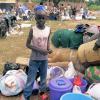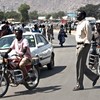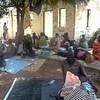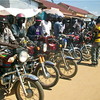Over 16,000 new HIV cases in S. Sudan last year
The Director General for South Sudan HIV and Aids Commission Lawrence Sekwat Kuyu, said more women than men had the disease.
Unprotected sex triggered the fast spread of the disease, he said. Overall 2.6 percent of those carrying the virus are married adults while 3.9 percent are under 18 years.
The rest are single people or widows or widowers, he said. The research showed that Central Equatoria State had the highest incidence of the disease followed by Western Equatoria State and Eastern Equatoria State.
The total number of HIV infections in the country is around 156,000 people.
South Sudan has seen a drop in the rate of infection with HIV/AIDS, official statistics released earlier this year show. But the world’s newest nation is still a long way from achieving its goal of zero new infections and zero AIDS-related deaths by 2017.
Lawrence Kuyu said the total number of HIV infections in the country is around 156,000 people, out of a population estimated at around ten million people.
Lawrence said the states bordering Uganda, Kenya and Democratic Republic of Congo are the most affected because of the frequent movement of people across the border.
Although the rate of infections with the virus is slowing compared to earlier years, the overall picture is mixed. The states of Western Equatoria and Eastern Equatoria and Jonglei have seen sharp rises in HIV infections whereas in regions like Central Equatoria, Upper Nile and Warrap the infection rate has slowed.
Women are more affected because they are ever vulnerable to men according to African culture.”
Women are disproportionately affected by HIV and increasing numbers of students are affected, Lawrence said.
The government has reaffirmed that it will stick to the national HIV and AIDs strategic plan 2013-2017. This includes projects to target young people gathering in at places like football matches or recreation centres. They also seek to check the status of all women in antenatal clinics.
As well as carrying out education and boosting awareness, the SSAC seeks to test for the disease among those in hospital for other illnesses.
Dr. Kuron Edward, who works at Juba Teaching Hospital, confirmed that the potentially fatal disease is spreading fast in South Sudan’s capital Juba. Hospital records show that more than 15 new infected people are registered daily, mostly among unmarried people. Last month August, some 163 new cases were recorded in the city.
He urged the HIV infected people to avoid sex and advised those who are not affected to always use a condom.
Angelina Ajith, a woman from Jonglei State blamed the disease’s spread on entrenched gender roles, which leave women powerless to protect themselves. Women are more affected because they are ever vulnerable to men according to African culture,” she said.
Even my daughter was raped by one of the SPLA officers who were later found to be HIV positive. I could do little about that because I am a woman and I lost my husband during the war,” she said.
She said, it is the responsibility of everybody in the country, to make sure that HIV levels are reduced.





